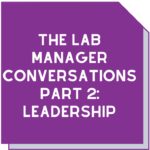ARE YOU BEING SERVED?
 For those of a certain demographic, this title will conjure up a British television sitcom based in Grace Brothers Department Store.
For those of a certain demographic, this title will conjure up a British television sitcom based in Grace Brothers Department Store.
But perhaps you heard those words just today, when you went into a clothing store or supermarket.
In last week’s article, we examined the theories of three quality thinkers – Deming, Juran and Crosby. No matter which philosophy an organisation adopts, at the core of each one is the customer.
Dr Deming’s first point of his 14 points is to ‘create constancy of purpose’ which places the role of meeting customer needs front and centre for all that follows.
The first of Dr Juran’s universal processes in his Quality Trilogy was ‘Quality Planning (Quality by Design)’ with the intent being to design in features that respond to customer’s needs.
Crosby amended his 4 Absolutes of Quality to include a fifth Absolute: that ‘The purpose of quality is to ensure customer success, not customer satisfaction’.
But even if you don’t subscribe to these quality gurus, most businesses know that they need to provide excellent customer service to stay competitive. They need to meet customer expectations. They need to provide a ‘customer experience’.
The problem is, there is so much competition in the marketplace that businesses can become confused about what customers want.
But are there some commonalities we can look for when we’re trying to benchmark for customer service? It appears that there are.
Understand what your customer needs
Customers become frustrated when there’s a disconnect between their expectations of a service interaction and what’s actually delivered. Their expectation is one of two outcomes – desired (what they hope will happen) and sufficient (what they find acceptable). There is a third possible outcome – unsatisfactory. This should be avoided at all costs!
Many businesses have discovered it’s often better to ‘under promise and over deliver’. This way, the likelihood of exceeding customer expectations is higher. However, others take pride in those higher expectations, knowing that they can deliver.
Investing in training your staff to actively listen to what a customer is telling them is critical.
Have multiple options for contacting you
 Customers expect companies to communicate with them on their preferred channel. This could be in person, online or by phone depending on the type of enquiry.
Customers expect companies to communicate with them on their preferred channel. This could be in person, online or by phone depending on the type of enquiry.
For example, a simple account balance enquiry is well suited to an online self-serve option. However, for investment advice, a live chat or phone conversation would be the preferred choice.
Technology can be your friend here. Live chat and messaging aren’t optional extras – it’s now an expectation.
Customer service staff can work more productively and may be able to handle multiple chats at one time. Customers like the ability to chat online to a human. This also gives staff the opportunity to handle complex customer requests with an empathetic touch and proactively uncover issues. With that knowledge, they can easily upsell or cross-sell products and services.
However, we’ve all had experiences of calling an organisation, speaking to different people, and getting different answers.
Regardless of the channel you use, ensure the answers your customers receive are consistent.
Personalise your customer experience
Nobody wants to feel like a number or that the person they’re dealing with is just ticking a box.
A whopping 79% of consumers say personalised service is more important than personalised marketing. They want you to know them and their preferences and feel like they’re valued. 84% of consumers will go out of their way to spend more money when they have a great experience which turns them into advocates and evangelists of your business.
Build a single, lifelong conversation no matter which channel your client uses.
When done well, personalisation makes a huge difference to how a customer perceives your business.
I recently received a product I’d purchased online. The process was simple and seamless, and delivery was very quick. When I opened my package, they’d included a note with my name handwritten on it, thanking me for choosing to buy from them. The note offered a discount on my next purchase which I could use myself or pass on to a friend.
Although I can see the marketing decisions behind this gesture, it still guarantees that my next purchase will be from them!
Respond quickly and fix the problem
Whatever the channel, customers expect your response to be fast. Even more importantly they want someone who is empowered to solve their problem with the knowledge and authority to answer questions and resolve their issues.
AND they only want to tell their story once! Nothing is more frustrating for a customer than having to tell their story to more than one person.
A new survey by Freshworks, a US customer employee engagement software company, found that although customers are more empathetic in the post-pandemic world, they’re also more demanding.
So, while 74% of customer service leaders stated that customers have increased empathy since the crisis, any business unable to meet their standards is quickly abandoned for a competitor that can.
Listen to them

We all want to be heard. Over 80% of customers said they want the opportunity to provide feedback although only about half believe a company will act on the feedback it receives.
Be sure to offer opportunities for providing feedback in both a formal and informal manner. This could be via surveys immediately following a purchase or through in-person or online customer focus groups.
Social media is an extremely useful tool for feedback. Monitor and respond to this, whether it’s positive or negative.
Be sure to follow through – if you say you’re going to do something, be sure you do it. This is particularly true in the case of social media where responses are played out in the full glare of the public lens.
Your prompt actions will help increase the level of trust in your business and create loyal customers.
“I can’t give you a sure-fire formula for success, but I can give you a formula for failure: try to please everybody all the time.”
Herbert Bayard Swope had it exactly right.
You can’t please everyone. You’ll never be able to provide exactly the goods and services that everyone exactly when they need it. There will always be that ‘squeaky wheel’ customer that you just can’t please.
Focus on making good, real connections with the ones that love what you do. Nurture those relationships and demonstrate appreciation for their business.
Your customer service may not ever be perfect. But it can certainly get close.
Need some help?
Did you know that at MAS Management Systems, we can provide you with support to review your customer service through our combined expertise in systems and marketing and make your business better and smarter?
Email Maree at info@masmanagementsystems.com.au if you want to find out how.
Remember, you don’t have to do this alone!
Download the article Are you being served?






